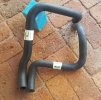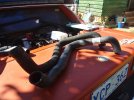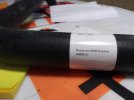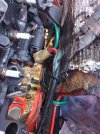carl
True Classic
I think the hardest part if removing the whole box is drilling out all the spot welds where the side walls are welded to the floor. An easier solution would be to remove just the bottom of the box and attach a new piece when done. In fact if you cut the bottom off about an inch or so in from the joint to the side walls you could reattach the bottom by adding new attachment strips to the edges and weld/rivet/screw/glue gun the bottom back on.




